The Making of Blade Runner 2049
LAST UPDATED – February 2018
I’ve updated this post a few times, it’s now packed with:
- Trailers for Blade Runner 2049
- Blade Runner 2049 Short Films
- Behind the Scenes on Blade Runner 2049
- Editing Blade Runner 2049
- The Sound Design and Soundtrack of Blade Runner 2049
- The Cinematography and Visual Effects of Blade Runner 2049
- The Making of the Original Blade Runner
- How to make the Blade Runner Origami Unicorn
- Blade Runner inspired filmmaking fun
Without doubt my most anticipated film of 2017 is Blade Runner 2049.
In part because I’m a fan of the original (like most people!) and because it’s being directed by Denis Villeneuve, who is definitely one of my favourite directors.
Pair that with stunning visuals from Director of Photography Roger Deakins, incredible production design from Dennis Gassner and a gripping soundtrack from Jóhann Jóhannsson, topped off with editing from Joe Walker and it’s essentially a dream team!
You can hear a lot more from many of the same filmmakers in this round up post on the Making of Arrival.
The film comes out on October the 6th.
UPDATE – Blade Runner 2049 is out now!
Blade Runner 2049 is now yours to own on blu-ray, DVD and digital download, depending on your preferred method of consumption. Personally I still like to see a bunch of plastic on my shelves and to geek out on all the special features.
Here’s what’s listed under the US 2 disc blu ray release, which is currently [amazon_link asins=’B075DHS7JK’ template=’PriceLink’ store=’jonelwfiledi-20′ marketplace=’US’ link_id=’4cc70be4-0bfb-11e8-bacb-87bbf1e4c26b’] on Amazon.com
- Designing The World of Blade Runner 2049
- To Be Human: Casting Blade Runner 2049
- PROLOGUES: 2022: Black Out
- PROLOGUES: 2036: Nexus Dawn
- PROLOGUES: 2048: Nowhere to Run
- Blade Runner 101: Blade Runners
- Blade Runner 101: The Replicant Evolution
- Blade Runner 101: The Rise of Wallace Corp
- Blade Runner 101: Welcome to 2049
- Blade Runner 101: Welcome to 2049
- Blade Runner 101: Within the Skies: Spinners, Pilotfish and Barracudas
Blade Runner 2049 Trailers
It does annoy me that these days we have to have a explosive up front grab, but here is the official full trailer for Blade Runner 2049.
If you want to be able to download high res audio versions of these trailers, then check out thedigitaltheater.com which has numerous files for each trailer.
UPDATE – Trailer 2!
The recently released second trailer delivers a lot more story points as well as new characters and arresting visuals.
Update – International TV Spot 1
The first international TV spot brings with it a few more enticing shots, characters and plot details!
#BladeRunner2049 is apparently 163 mins long (TBC runtime from Sony Russia, via DCP distribution service Kinoplan & https://t.co/GlhBo7IpNt) pic.twitter.com/4Rxp2TzW3R
— Anton Volkov (@antovolk) August 29, 2017
Blade Runner 2049 Short Films
With only about a month to go before the release of the film, there are three short films coming to the web highlighting some of key events that occur between Blade Runner and Blade Runner 2049.
Here is the first, 2036: Nexus Dawn, directed by Sir Ridley Scott’s son, Luke Scott. Luke was second unit director on Ridley’s The Martian (check out this detailed making of post) and had his feature directorial debut last year with Morgan.
In the second short film, 2048: Nowhere to Run, Luke Scott again directs a small glimpse into the Blade Runner world before 2049.
The book featured in this short is Graham Greene’s The Power and The Glory.
Too human for heroism, too humble for martyrdom, the nameless little worldly “whiskey priest” is nevertheless impelled toward his squalid Calvary as much by his own compassion for humanity as by the efforts of his pursuers. – John Updike
https://www.youtube.com/watch?v=OD0RCfcaols
This preview showcases the third and final short film, Blade Runner Black Out 2022, from anime director, Shinichiro Watanabe. The short itself comes out on September 26th.
Here is the full animated short film, Black Out 2022. This stunning film features some of the most impressive and immersive visuals of the trilogy.
Behind the Scenes on Blade Runner 2049
In this behind the scenes featurette you can hear from Harrison Ford, Ridley Scott, Director Denis Villeneuve and DP Roger Deakins with a few teases about the making of the film.
There’s not much actual meat to the behind the scenes work, but you do get a chance to see a few more shots than in the trailers.
I’ve never worked on a film with so many sets and different lighting patterns. Technically it’s quite challenging. – Roger Deakins.
I’ll be updating this post over time, so check back regularly!
Wired’s cover article this month is focused on Blade Runner 2049 with a characteristically detailed and sprawling article on the impact of the first film on popular culture, as well as the 35 year road to making the sequel.
Ridley Scott swears he doesn’t think too much about the past. Ask him if he feels validated that the world seems to have finally caught up with Blade Runner and he’ll give you a cockeyed stare and a shrug: “I don’t give a shit.”
Wait, really?
“No, I don’t give a shit,” he says. “I’ve got a movie shooting in Rome in two weeks. The important thing to do is move forward and never look back.”
There’s plenty of interesting details on the original film’s difficult production process, the decision to pick Denis Villeneuve as the director, experiences on set and in the edit suite and a few interesting details on the production design, cinematography and more!
CinemaTyler has a really nicely put together and very well researched making of video, focusing on the production design on Blade Runner 2049, and full of interesting quotes. Well worth a watch.
VICE also has a nice, if more PR kit-led, making of video here too. It also features a few more berets than I might have anticipated.
Lastly, if you’ve not seen this pretty amusing interview from the UK’s This Morning, then you’re in for a treat.
Director Denis Villeneuve is interviewed by BAFTA Guru in this 10 minute video.
Denis narrates an ‘anatomy of a scene’ for the New York Times. “I kept telling Ryan, walk slower…”
Editing Blade Runner 2049
For editor Joe Walker, Blade Runner 2049 marks his third collaboration with director Denis Villeneuve with Sicario and Arrival, preceding this outing. It also marks the third time that editor and author Steve Hullfish has interviewed Joe about the craft of film editing. Check out his interviews for 12 Years a Slave, Sicario and Arrival here.
In a nearly two hour conversation Joe and Steve discuss numerous fascinating aspects of the edit, from cutting it down from an initial four hour assembly to re-working difficult scenes in post as well as some of the minutia of the craft of film editing. It’s always great to listen in on a chat between two experienced editors!
For much more of this check out Steve’s brilliant book, The Art of The Cut, which I’ve previously reviewed here.
HULLFISH: I’ve talked to some editors who’ve said that their shows, as a rule, do not ever use pre-laps in dialogue between scenes.
There’s a great pre-lap of dialogue going into K’s first baseline test. You hear him going through the baseline test for quite a while before we actually see him in the room where he’s finally in sync. Was that as scripted? Or did you create that pre-lap?
WALKER: One of the very first things I did was lay guide tracks on the pre-viz, so from the start I made this a pre-lap. The first voice you hear is the interrogator saying “Officer KD6-3.7” and I felt it was important to put that on K’s face to hammer home that he is a numbered replicant and what that means to him.
I love pre-lapped sound. One of the editors I learned a lot from was Tariq Anwar who worked at the BBC for a long time. I was lucky enough to be his dubbing editor on ‘March on Europe’. He often created beautiful pre-laps with either a sound effect or a voice ahead of the picture cut. The new scene would come to fruition at exactly the right time. It felt beautifully cinematic, the soundtrack is in sync for most of the film but sometimes it diverges and you entertain two separate thoughts, like patting your head and rubbing your tummy.
In Blade Runner, the pre-lap helped make the actual interrogation when we cut to it, a very violent assault. I was able to spread out the first part which is a kind of slower paced introductory section where K repeats the ‘Pale Fire’ mantra: ‘Cells interlinked within cells interlinked within one stem. And dreadfully distinct against the dark, a tall white fountain played.” So when we cut into the interrogation room we join it in the middle of a quick-fire assault.
The whole interview is pretty long (9000+ words) so settle down for delightful journey into the heart of Blade Runner 2049‘s creative process. An absolute must read!
Joe Walker on sound design in Blade Runner 2049:
In my edit, I set out to make contrasts as sharp and intense as possible.
One I love is during Luv’s violent attack on Joshi where there are some very sharp cuts… literally and editorially. At the height of the attack, we shift outside to an exterior looking in and the soundtrack plummets down to the soft sound of snow falling.
I am very happy that the soundtrack preserves an idea prevalent in all the assemblies which was that it would be extremely dynamic. You could have big grand overpowering pieces of music and sound, such as the seawall sequence and yet you could also zero in on the sound of the bee beating its wings on K’s hand and an odd moment of desert silence. That’s the kind of range.
In this episode of AOTG’s Cutting Room podcast you can listen to a thoroughly enjoyable half-hour chat between Gordon Burkell and editor Joe Walker.
They get into both the philosophical aspects of the film, and it’s dream-like quality, and the nitty gritty of handling a film of this scale, working with the performances and other artistic collaborators.
You try to resist pinning music on the cut too early, and it means that you find a very precise rhythm for the cut and rhythm is a really, really big part of it.
And you’re trying to find the inner rhythm of the performance and there’s a way that things are cut. They have their own kind of pacing, that you try to find over time in the Director’s cut.
And if you start too early being influenced by a piece of music in the wrong place, then it doesn’t help you really appreciate where the pace is coming from. Is it coming from the story and the characters or from John Williams, you know, as a temp track.
So trying to try and keep all that stuff out for as long as possible. – Joe Walker
Blade Runner 2049 Cinematography
The look of Blade Runner 2049 is absolutely stunning. The kind of thing you might want to have on loop in your house just so you can absorb every frame.
This article from ICG magazine delves into the look and feel of the film from a number of contributor’s perspectives including Roger Deakins, DIT Joshua Gollish, aerial’s DP Dylan Goss and production designer Dennis Gassner. It’s well worth a read, particularly if you’re interested in some of the technical production details.
Here is Deakin’s on creating that iconic ‘orange desert look’:
That orange environment was done in three different ways,” Deakins remarks. “The opening part was on stage and, for this, I had Tiffen make some specific red filters for in front of the lens. While most of my lighting was tungsten-based Spacelights, there were some 20 Maxi-Brutes gelled green to give a feeling of yellow light against the predominantly red filtration.
“The second section was an interior shot on location in Budapest,” he continues. “For this we had HMI sources from outside the windows, which were in turn diffused and gelled with the same color gels that we had used for lens filtration previously. Then, for the third part of the sequence, we had a very large set that used a couple hundred open-faced 2Ks and sixty 10Ks, with all those lamps bounced and gelled to maintain our color. All of the color scheme was controlled in camera and this gives it a reality I doubt it would have had if left to post.”
Deakins continues to employ a single LUT, which he has favored for years. “I made slight adjustments with [DIT] Joshua Gollish to skew it just a bit one way or the other, but I use basically one LUT and do as much in camera as possible,” he adds.
Premiumbeat.com has a really nice write up, by Michael Maher, on some of the lighting rigs DP Roger Deakins used during the production, some of which look as interesting as the effects they create. There’s also a few helpful tips on implementing these ideas in your own films.
There’s also this really nice short interview with Roger, from ARRI’s YouTube channel, which has been released as part of their centennial celebrations. There are a load more to watch here too.
Blade Runner 2049 Visual Effects Breakdowns
The Art of VFX has an interesting interview with VFX Supervisor Richard Clegg, who works at MPC, on re-creating Rachel in CG form, which includes some revealing breakdown stills.
The eyes are always important. Can you explain in details about their creation?
We spent a lot of time thinking about the best way to build physically accurate eye models, textures and shaders. We fully retraced all of the eye caustics and scattering. When the eyes moved even a fraction, we simulated the tissue wobbling in the eye ball itself. We spent many months also studying eye anatomy and the human facial muscle system to help us replicate correct movement of the skin and soft tissue around the eyes.
MPC have released this nearly 3 minute breakdown of the astonishingly detailed work that went into creating a digital double of Rachel.
The VFXBlog has an interesting account of creating the virtual threesome between Joi, Mariette and Joe in the film, as told by visual effects supervisor John Nelson.
I think there are about three to four shots in a sequence where it’s both actresses and the third woman. It’s really very interesting because each shot has the story arc that goes through it. It’s cool because they don’t ever completely line up.
But they line up for moments and it’s really magical when their eyes line up. At least from my point of view. I’m really proud of it because it doesn’t really look like a big CG scene. It just looks like this emotional crazy scene, which is good. – John Nelson
The VFXShow podcast from FXGuide also delivers an hour and a half (!) discussion on the making of the film, which you can listen to here.
Rodeo FX has posted this nice two minute breakdown of some of the 75 shots they created for the film, including the iconic Atari fly-by.
It’s worth popping over to the site to interact with some nice before and after image sliders, including getting a look at a particularly sketchy looking green-screen!
The VFX Blog has an interesting little write up on some of the work Framestore delivered for the film, including the iconic orange haze over Las Vegas, which led to some 13 hour renders!
https://www.youtube.com/watch?v=tM–R94Quc4
Visual effects houses UPP and Double Negative (DNeg) have also posted visual effects breakdowns of their work on the film.
https://www.youtube.com/watch?v=ye6RrFjGJrE
Isotropix goes behind the scenes of some more of DNeg’s work on Blade Runner 2049 with Rhys Salcombe, the Build and Sequence Supervisor for the Environments Teams.
The rain was one of the trickiest elements to get right on this show because it does bring a lot of character to the shots. We did these enormous simulations to try and get the rain looking as accurate as we could.
We also modelled individual rain drops which were scattered onto our point cloud systems, for the rain itself, so light was accurately scattered through the rain drops making our shots feel larger and more expansive. Because the rain was such a tricky thing to sell, we felt that this was a necessary step to take it that extra level of realism. – Rhys Salcombe
Thanks to @stevehullfish for the link!
If you want even more Blade Runner 2049 goodness then you can buy yourself a copy of the print or enhanced iPad edition of Cinefex 155, which is heavily focused on the making of the film.
In this featurette from Weta Workshop, you can check out the crazy level of detail that goes into creating the ‘miniatures’ (by scale, but ‘bigatures’ by size) that provide some of the iconic shots in the film. A laser guided motion capture rig filmed several passes of each move on a Canon DSLR.
Oscar nominated Visual Effects Supervisor John Nelson discusses working with director Denis Villeneuve and his creative process on the film.
World renowned Territory Studio created the on-screen graphics for Blade Runner 2049, as they have for dozen’s of huge Hollywood franchises and tent-pole blockbusters.
With an open brief to reconsider technology interfaces and interaction systems, we worked closely with Director Denis Villeneuve and Supervising Art Director Paul Inglis to support storybeats, performance and context.
Adopting an experimental approach, the team set out to create highly original screens. Working across 15 sets, we delivered over 100 assets for on set playback, also driving the design direction for those concepts delivered to post.
You can check out loads of concept art, high res images and more on the Territory Studio site here.
“Everything we did needed to tie into the story points of the old Blade Runner universe, which were mainly about where someone is in the world’s hierarchy,” says Peter Eszenyi, creative lead and visual effects supervisor at Territory Studio.
“The computer interface for someone in a position of power needed to look different than an average person’s technology, which was more cobbled together.”
Many designs for the screens started in Adobe Illustrator CC, and were then animated in After Effects. Cinema 4D was also used to add dimension to the technology.
Making the screens look realistic within the environments helped to make the sets more all-encompassing for the actors.
Some of the team are also interviewed in this post on the Adobe Creative Cloud blog, which is worth a quick read.
Daniel Højlund from Territory Studio talks through some of their work on Blade Runner 2049 in this presentation from NAB at Adobe’s booth. Skip to 6.47 to hear the details on BR2049.
I’ve previously interviewed Territory Studio co-founder and creative director, David Sheldon-Hicks at length on their creative and technical process here.
Here's Joe Walker's sketch of the device in this tweet. Joe had the idea for what it should look like – essentially a Moviola – and sketched it on a napkin. pic.twitter.com/M1KG6mPSxi
— Steve Hullfish (@SteveHullfish) December 19, 2017
The Sound Design and Soundtrack of Blade Runner 2049
As always, the Soundworks Collection, has an insightful and engaging profile of the sound design and score of Blade Runner 2049, which was stunning.
The video feature a raft of the artists involved in the film including: supervising sound editor Mark Mangini, sound designer Theo Green, re-recording mixer Doug Hemphill and Ron Bartlett, picture editor Joe Walker and Composer Hans Zimmer and Benjamin Wallfisch.
If you’re a fan of Hans Zimmer then you’ll definitely want to check out his excellent MasterClass.com course, here is my full review.
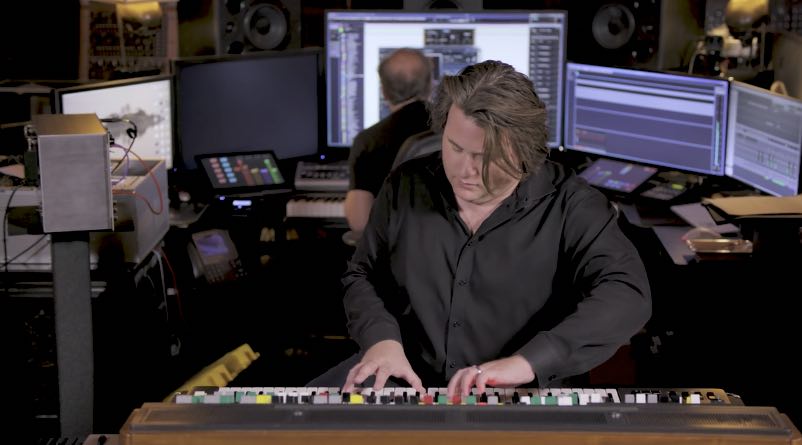
Benjamin Wallafisch playing the CS80 synthesiser
Collider has an interesting interview with composer Benjamin Wallfisch, about coming on to the project after the original composer, Johann Johannsson’s score was scrapped.
When you guys first came on, did you listen to any of what the previous composer had done or was it very much just starting from scratch?
WALLFISCH: We were starting from scratch. I’m a huge fan of Johann’s music, but we deliberately started with a completely blank slate. If there was a model, it was Vangelis, and finding a way to reinvent that musical attitude and approach so it felt right for this new story.
Editor Vashi Nedomansky has even put together a little Blade Runner 2049 inspired ring-tone you can download to have the sound of dystopia in your pocket at all times.
Oscar nominees re-recording mixer Ron Bartlett and supervising sound editor Mark Mangini describe their creative collaboration for the sound of Blade Runner 2049 in this BAFTA Guru interview.
The SoundWorks Collection has some excellent insights to share in these short clips, explained by various members of the Blade Runner: 2049 sound team.
The Making of the Original Blade Runner
To accompany Wired’s extensive article about Blade Runner 2049 there are a series of short interview films with various members of the cast and crew. (Including a not so interesting one from director Denis Villeneuve and a more entertaining but fluffy video with Harrison Ford and Ryan Gosling messing about.)
In this fascinating scene breakdown from Blade Runner director Ridley Scott you can learn a great deal of filmmaking tips and tricks that went into the scene in which Deckard meets Rachel for the first time, including how to create replicant eyes with practical effects.
Nerdwriter has a great video essay on the iconic interweaving sound design, musicals score and dialogue within the original Blade Runner. He draws out some really interesting insights, which will no doubt be relevant to the final sound of the upcoming 2049.
Which Version of Blade Runner Should I Buy?
If you’re thinking about picking up the original Blade Runner on Blu Ray or DVD and wondering which version to buy, this video from Slate has a handy comparison between the three major versions available today.
Apparently the Final Cut is the best representation of director Ridley Scott’s vision for the film, but looking at the trailer (below) I’m not sure I’m convinced by the re-grade to a green look.
Plus I don’t mind a little less gore. So I might plump for ‘the way I remember it’ and stick with the good ol’ Director’s Cut.
Buy Blade Runner on Amazon Global Stores
How to Make the Blade Runner Origami Unicorn
If you’ve ever wondered how to make the iconic origami unicorn that Deckard finds at the end of the film then bladerunnerunicorn.com is the place you need to go!
In 32 steps you’ll be able to make your own… jump over to the full site to learn how to make both the unicorn, chicken and match stick men, featured in the film.
If you want to see a 15 minute tutorial on how to do it then you can also watch this video from Duke Harper, which has been viewed over 34,000 times!
Personally the step by step diagram seems easier to follow…
Blade Runner Inspired Filmmaking Fun
I came across this making of video on Redshark News’ YouTube channel about two Croatian filmmakers who are making a ‘Blade Runner inspired short film’ called Slice of Life.
As you can see from the video a little ingenuity, a lot of hard work and some neat visual effects delivers a very realistic 80s looking film.
You can read more about it in this article from TheVerge.com.
If you wanna try the new #RESOLVE14 dehaze plugin you can download the Blader Runner 2049 trailer. It works great! pic.twitter.com/IY5hm6j4wZ
— Mathieu Marano (@ilovehue) May 8, 2017
In this episode of Lessons from the Screenplay, you can check out how Blade Runner works as a ‘future Noir’. A blending of film noir cliches and sci-fi tropes that develop the ‘complex morality at the heart of Blade Runner.‘



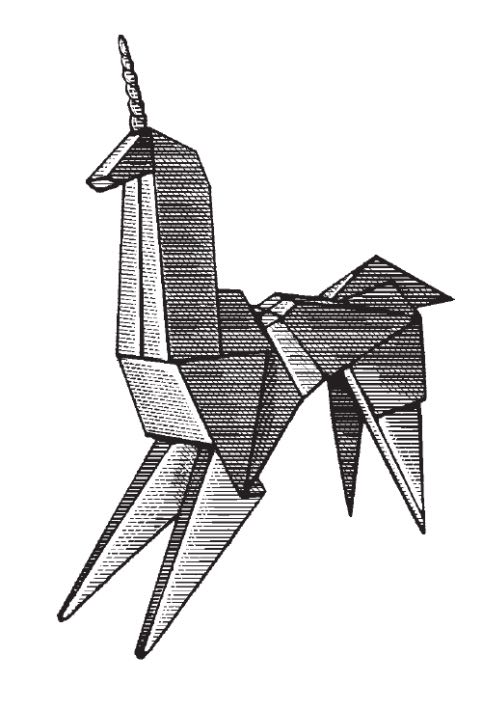

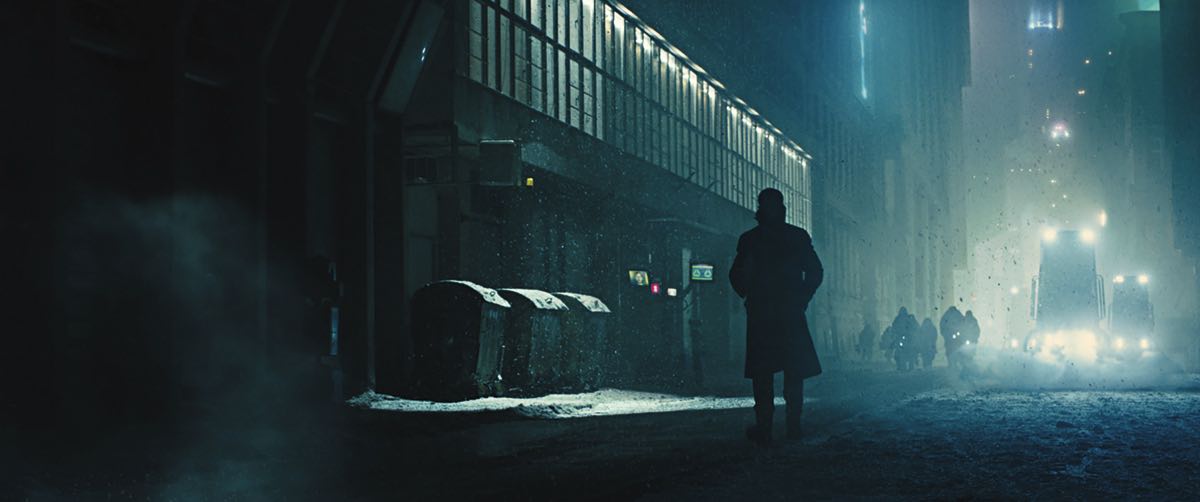
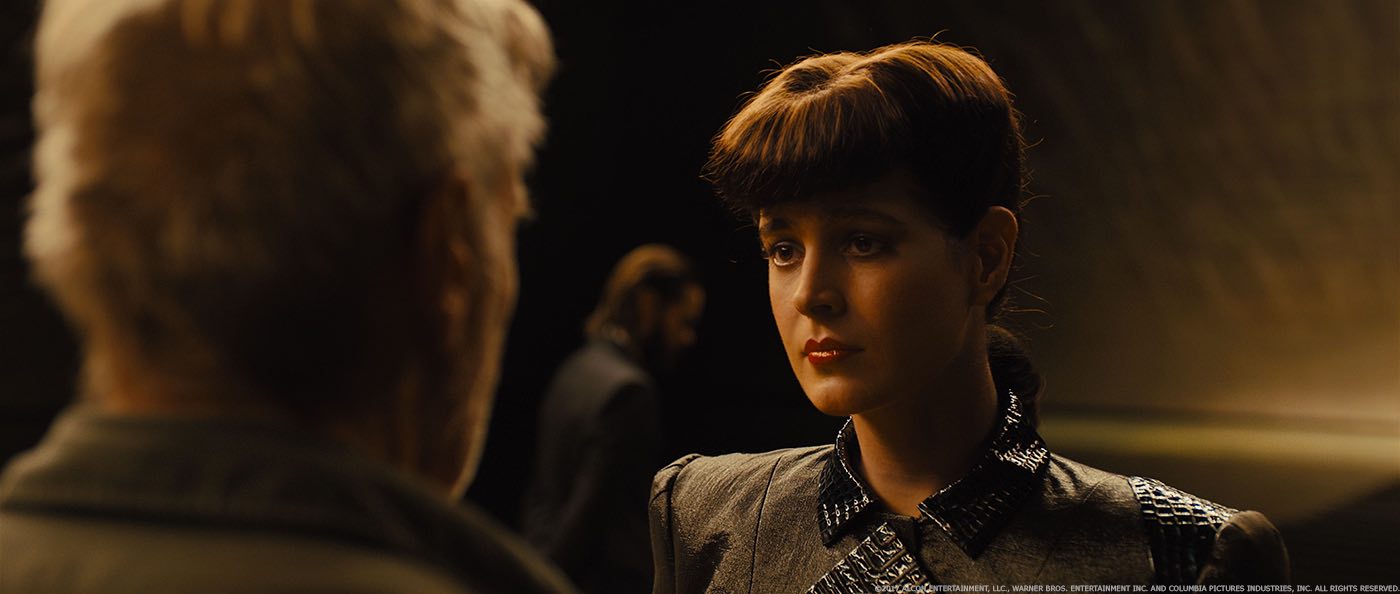

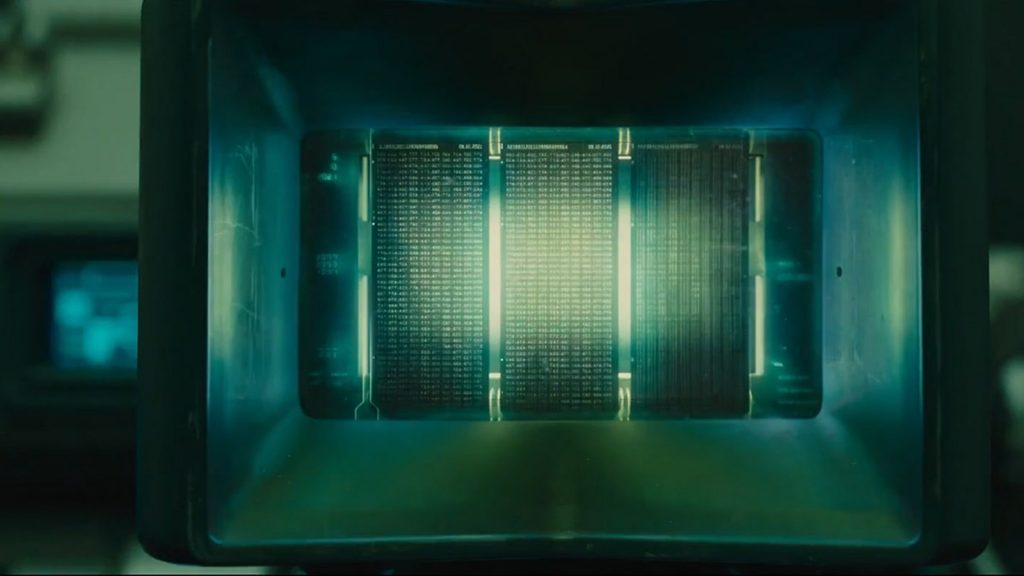
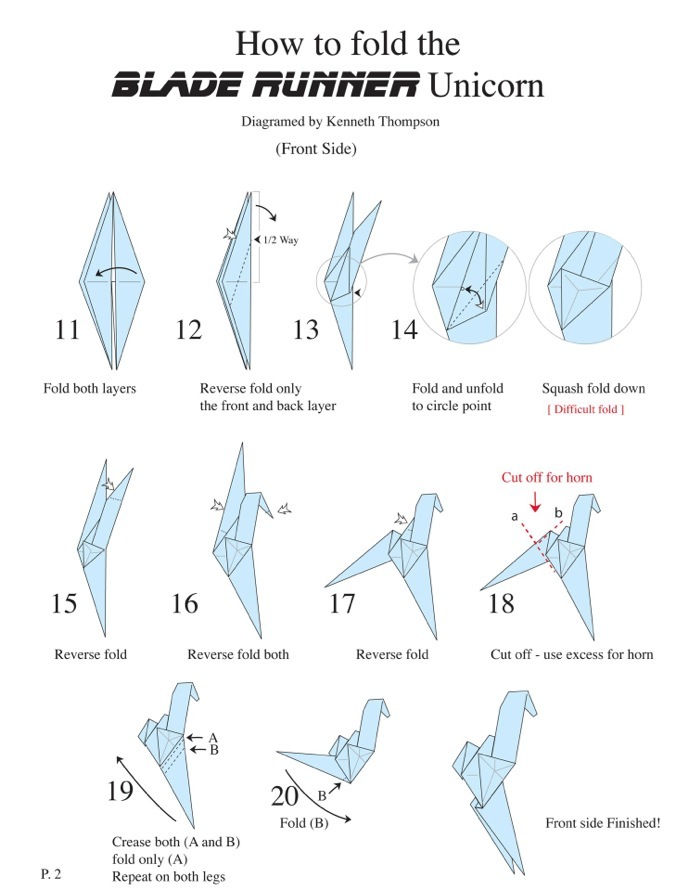
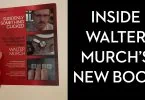

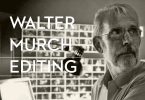

Sicario was my favorite film and I so think that it should’ve won the oscar that year!
The combo of Denis and Deakins is awesome.
Eagirly waiting for this movie
Loved this article a lot, thank you for your efforts in making something useful and entertaining